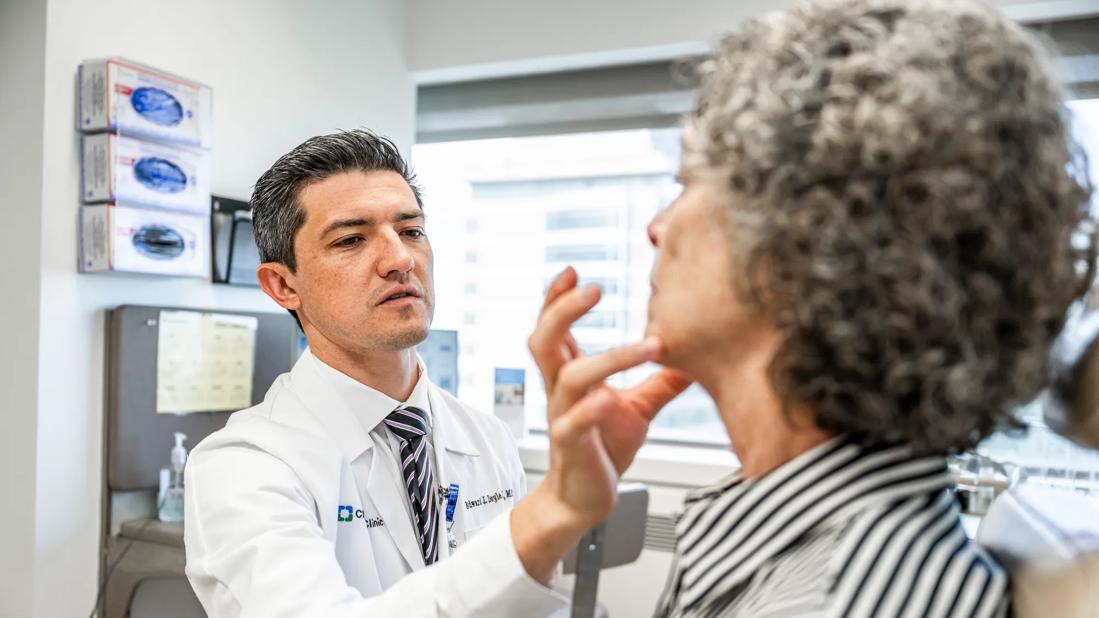Novel three-tier classification system can guide patient counseling

A recent study identified several risk factors associated with worse outcomes in major head and neck ablative and reconstructive surgery in geriatric patients. Using these risk factors, the authors were able to design a risk stratification system to assist with preoperative patient counseling and surgical planning. The multi-institutional study was published in JAMA Otolaryngology – Head & Neck Surgery.
Advertisement
Cleveland Clinic is a non-profit academic medical center. Advertising on our site helps support our mission. We do not endorse non-Cleveland Clinic products or services. Policy
Eric Lamarre, MD, an otolaryngologist with Cleveland Clinic’s Head & Neck Institute and one of the authors of the study, notes that while cancer is the second leading cause of death among the elderly, these patients are often considered poor candidates for multimodality therapy. “Oftentimes in head and neck cancer, or even in sequella from treatment of head and neck cancer, it requires a very involved operation and very involved recovery,” says Dr. Lamarre. “We knew that the overall outcomes were comparable in terms of success of the operation. But we were interested in the side effects of an operation of this magnitude in patients that are 80 and older.”
The study included 376 patients (median age 83 years old) from 17 academic centers. Data were analyzed from February 1 to April 20, 2019. The study aimed to identify 30-day serious complication rate, 90-day mortality, and 90-day decline in functional status. A total of 193 patients (51.3%) had 30-day serious complications, 30 (8.0%) died within 90 days, and 36 patients who were independent at baseline declined to dependent status (11.0%). The study also looked at which reconstructive procedures were associated with these outcomes and found that type of flap (free vs pedicle, bone vs no bone) did not have a significant association.
“I think we knew that it was safe to do flaps in patients that were 80 and over, but we didn’t have the perioperative course defined as robustly as we did in this study,” says Dr. Lamarre. “I think these findings fill a void whereby we better counsel patients, specifically as they get 80 and older.”
Advertisement
Variables that were associated with poorer outcomes included:
From these risk factors, the authors were able to create a novel three-tier risk classification system. “We were able to find a novel three-tier risk classification system based on age – being 85 and older would put you in a higher risk category of major complications,” says Dr. Lamarre. “Having a low BMI, would also put you at a higher risk of complications. A higher frailty index puts you at a higher risk, too. Finally, if you have two significant comorbidities, that put you at a higher risk for perioperative complications.
Dr. Lamarre believes this classification system should help guide patients in terms of whether to move forward with an operation of this magnitude. Often when a patient gets to this point, there is not much in the way of alternatives, so he believes the discussion can now turn from pursuing a major head and neck operation with reconstruction towards committing to a more palliative route.
Advertisement
Advertisement

Case study illustrates the potential of a dual-subspecialist approach

Evidence-based recommendations for balancing cancer control with quality of life

Study shows no negative impact for individuals with better contralateral ear performance

HNS device offers new solution for those struggling with CPAP

Patient with cerebral palsy undergoes life-saving tumor resection

Specialists are increasingly relying on otolaryngologists for evaluation and treatment of the complex condition

Detailed surgical process uncovers extensive middle ear damage causing severe pain and pressure.

Despite advancements in the specialty, patient-centered care needs to remain a priority